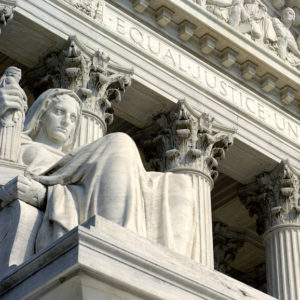Rarely has a single word created so much buzz as the recent revival of “court-packing.” It refers to the notion of expanding the size of the Supreme Court so that its composition, and its decisions on key issues, will quickly change.
There is no valid reason to expand the Supreme Court, and this invalid one has been rejected before — court-packing would destroy the independence of the judicial branch.
Presidents have always appointed judges guided by a view of the power and proper role of the judiciary in our system of government. The opportunity to do so, however, depends largely on attrition, that is, on judges choosing to leave their life-tenured positions.
The ordinary course of attrition-and-appointment can have a big impact. When President Barack Obama took office, for example, 10 of the 13 U.S. Court of Appeals circuits had a majority of Republican appointees and two others were evenly split. When he left, nine of those circuits had Democratic-appointed majorities.
Beyond attrition, vacancies also arise when Congress creates new judgeships. In the past, Congress has done so when caseloads become too heavy. The goal is to increase the capacity of the judiciary, often based on recommendations from the Judicial Conference.
“Court-packing” is different. The Supreme Court has had nine justices since 1869. Today, it hears half as many arguments, and decides half as many cases, as it did in the 1980s. There is no capacity problem.
Those who urge expanding the size of the Supreme Court seek not to increase its capacity but to change its output: they want to alter the actual decisions the court makes.
We’ve been here before. President Franklin Roosevelt was first elected in 1932, promising that the federal government would lead America out of its economic desert. The Supreme Court, however, stood in the way of his plans. Based on a traditional view of the federal government’s constitutional authority, the court repeatedly struck down New Deal legislation. The 1936 election not only gave Roosevelt a landslide victory it gave him overwhelmingly Democratic majorities in the Senate and House.
On Feb. 5, 1937, just two weeks after taking his second oath of office, Roosevelt recommended legislation to add a new judgeship “where there are incumbent judges of retirement age who do not choose to retire or to resign.” That retirement age was 70. Not surprisingly, the Supreme Court’s “Four Horsemen” who had consistently opposed Roosevelt’s economic legislation were each more than 70 years old.
The Judiciary Committee, dominated by Democrats, issued its report on S.1392 on June 7, 1937, “with the recommendation that it do not pass.” Everyone knew that “the object of this legislation” was “a change in the decisions of the Court,” to “increase the number of Justices for the express purpose of neutralizing the views of some of the present members.”
But don’t presidents appoint Supreme Court justices with the hope that they will take a particular approach to deciding cases? Yes, but not only does that gamble not always pay off, but the president can do nothing once that judicial life-tenure begins.
The suggestion that Congress might, at any time, retaliate against certain judicial appointments or decisions by manipulating the structure of the judiciary itself is a radically different proposition. It is, the Judiciary Committee said, “nothing more than the declaration that when the Court stands in the way of a legislative enactment, the Congress may reverse the ruling by enlarging the Court.”
The Judiciary Committee had the answer in 1937: “Even if every charge brought against the so-called ‘reactionary’ members of this Court be true, it is far better that we await orderly but inevitable change of personnel than that we impatiently overwhelm them with new members. Exhibiting this restraint, thus demonstrating our faith in the American system, we shall set an example that will protect the independent American judiciary from attack as long as this Government stands.”
We should follow that example today. The committee argued that preserving the “American system” of three independent branches is “immeasurably more important” than any current political objective. In other words, the ends do not justify the means.

